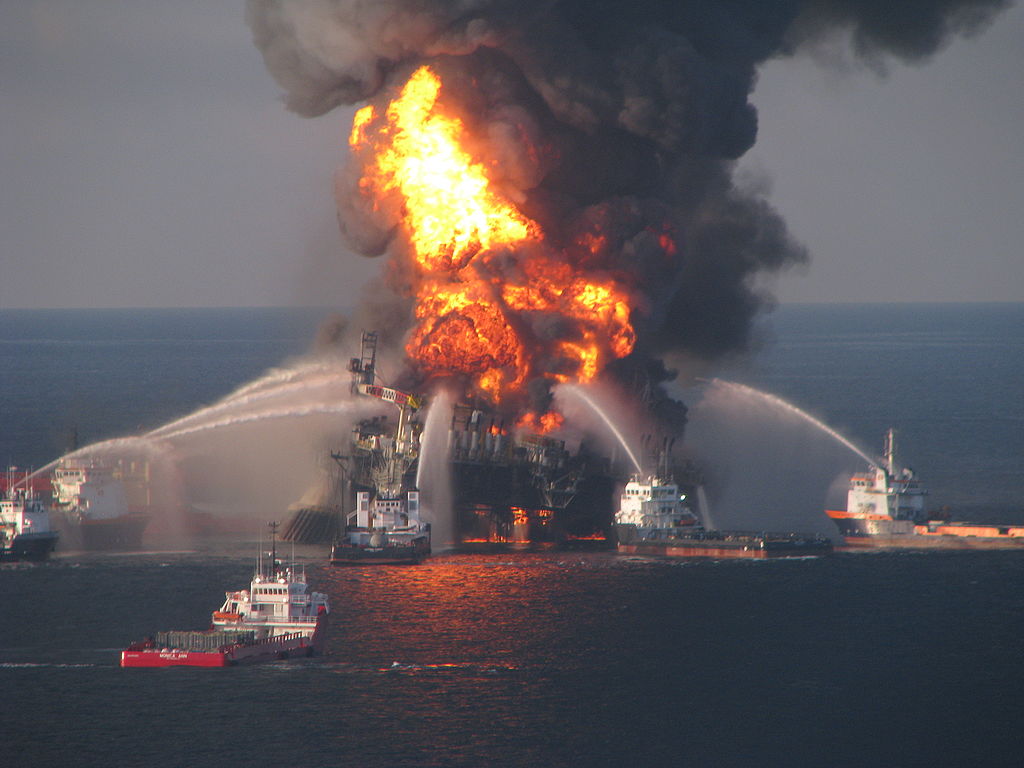Methane remained in Gulf of Mexico for months after BP accident, study says
Photo: U.S. Coast Guard, via Wikipedia Commons
When the Deepwater Horizon well exploded in April 2010, it released hundred thousands of tons of methane gas into the Gulf of Mexico, and it was believed that microbes would consume almost all of the gas released into the deep Gulf – which increased methane concentrations to more than 40,000 times above normal levels. But new findings from a scientific team that includes a Texas A&M University at Galveston researcher show that much of the gas was not removed by the microbes as quickly and efficiently as previously believed.
Rainer Amon, associate professor of marine sciences and oceanography at Texas A&M University at Galveston, and colleagues from the University of Georgia, Georgia Tech, Southern Mississippi, Florida State, North Carolina and California Institute of Technology have shown that the methane gas was still around for many months after the event. Their work is published in the current issue of Nature Geosciences.
The 2010 Deepwater Horizon explosion released 500,000 tons of gas into the Gulf of Mexico.
The team found that the microbes did consume much of the gas released during the blowout by naturally occurring processes, but at a slower rate than believed, which allowed the elevated levels of methane to spread throughout the water column.
“Most of the gas injected into the Gulf was methane, a potent greenhouse gas that contributes to global climate change, so we were naturally concerned that this potent greenhouse gas could escape into the atmosphere,” said Samantha Joye, senior author of the paper, director of the study and professor of marine science in UGA’s Franklin College of Arts and Sciences.
“Many assumed that methane-oxidizing microbes would simply consume the methane efficiently, but our data suggests that this isn’t what happened.”
Amon adds, “The bacteria break down the methane as they use it as a carbon source, and this is a natural process. But the process took considerably longer than previous studies have indicated.”
The team measured methane concentrations and the activity of methane-consuming bacteria for 10 months, starting before the blowout with collection of an invaluable set of pre-discharge samples taken in March 2010.
They found that the abundance of methane in the water allowed the bacteria that feed on the gas to flourish in the first two months immediately following the blowout, but the bacterial activity levels dropped abruptly after the initial two months despite methane still being released from the wellhead.
The team says that bacteria in the Gulf were probably able to consume about one-half of the methane released, but that an absence of essential nutrients and the enormous amounts of gas throughout the water column prevented all of the gas from being consumed.
“It shows the sudden drop in bacteria consuming the gas was not due to an absence of methane, but a host of biological, environmental and physical constraints that made it difficult for bacteria to consume the methane rapidly,” Amon says.
“There were still considerable amounts of methane in the water column.”
The team says that scientists need more information to understand what limits microbe consumption of natural gas in the ocean in order to predict where the gas will end up during future disasters which are likely to occur since there are more than 4,000 active oil and gas wells in the Gulf of Mexico.
The project was funded by the National Science Foundation, NOAA, the Department of Energy, Greenpeace and the Gulf of Mexico Research Initiative. The Texas A&M field campaign was facilitated by the Geochemical and Environmental Research Group (GERG).
Media contact: Rainer Amon at (409) 740-4719 or Keith Randall, News & Information Services, at (979) 845-4644
#TAMUresearch


